First time coming across the html review, an infrequent curated literature drop designed to be read specifically on the web. It’s nice.
(thanks CW&T)
First time coming across the html review, an infrequent curated literature drop designed to be read specifically on the web. It’s nice.
(thanks CW&T)
Folks have been worried about the side of AI creative generation ripping artists without acknowledgement.
On the flip of this is artists merging their own work with AI and consensually outputting something entirely new. @matt@isfeeling.social has great wallpapers here showing off this workstream.
While a few years late to this one, I picked up Celeste on a whim and got right into the "masocore" platformer by Maddy Makes Games.

I love the breadth of creativity in platformers, and its rare to encounter one that delivers the full package - phenomenally designed levels (and mechanics), education through gameplay on building your skillset, wonderful soundtrack to complement the mood of the game narrative, and differentiated environmental color tones to really set the mood for each "stage". Having (somehow) completed the game through its myriad of labyrinthine levels and increasingly masochistic difficulty, it has earned itself an absolute favorite of mine.
First, I am not a masocore gamer by default. I love a good challenge, but I hardly made it more than a couple of bosses in Elder Ring before switching gears to just marauding through the landscapes by horseback and avoiding confrontations. So... there was no way I was playing this game with the default one AirDash value -- I used the assist option to up that value to "2", because, in retrospect, you have to be a far, far more talented player to get anywhere in that game with a single double-jump. And you do a lot of double-triple jumping in this game. It's safe to declare it's the game's signature, and primary, method of movement.

And that is, of course, what makes the game exceedingly challenging and sequentially rewarding: you are given a screen of obstacles that must be navigated, typically by way of dying dozens – dozens – of times to perfectly move the Celeste accurately and correctly through to the end point. Not unlike nearly every other platformer, sure, but there is something melodic about this one that really emphasizes the timing, the learned maneuvers over the course of the stages, that brings everything together in that single screen's set of obstacles. Once executed, there's a thrill to having completed it correctly. And there is usually only one way to complete any given area in this game correctly. Which... is part of the charm.
🎮
You have to admire the work that went behind this Streaming Optimizer by Axios, which takes inputs on the shows you watch, calculates their runtimes throughout the year, and lines up which platforms they’re on, outputting a subscription cycle for each. But… is it easier to just stay subscribed?
Look, it’s inevitable bars will continue to diversify their drink options and cocktail recipes to accommodate the curiosity in spirit-free drinks. And you don’t have to be sober to enjoy alternative options, either. Sometimes you just want to be at the bar and enjoy the vibe.
Taking a gander at Modist brewery in Minneapolis.

I’d bump Wine Thief & Ale Jail higher on this list, but a finely curated St. Paul liquor store guide nonetheless. racketmn.com
The 10 Best Liquor Stores in St. Paul
An impromptu thought earlier last week: let’s visit Winona and check out a coffee shop that is up for sale near the campus. Which campus, we had no idea. We also didn’t know anything about Winona (though apparently the nation’s capitol of stained glass windows, okay). I knew it was down the river near La Crosse (where we had stayed a number of times on the way to Madison going back and forth for Ashley’s grad school), but… we’d never stopped here before.
So we saddled up a room at the Fairfield and headed down Saturday morning — predictably enough, right after a spring blizzard left the roads in absolute shit condition.
Winona is about a two hour drive southeast of the Twin Cities, smack on the Mississippi River (literally looks like an isthmus or island city), buttressed by the craggy hills that ride the water on either size of the Minnesota and Wisconsin border. Which creates a kind of off-kilter valley vibe.

And what a vibe this city is. It’s like one big pseudo-city neighborhood, about 20k in population strong (plus however many attend the three colleges scattered around its geography). An initial drive through the streets gives the impression of a small, rural mill town with a barely-hanging on downtown, but also energized by young collegiate folks marauding around town and keeping the bars up late into the night. Something felt strange about the whole place — it wasn’t as tightly centered as Red Wing, not quite as pretty as La Crosse, or as quaint as Northfield. It felt blasé. Maybe in a good way.
I’ll say this, though — they’ve got some gems here. Notably, one of the Winona State University parking lots has a solar panel yard atop it, the first we’ve seen in the states. Definitely the future — it shades the cars underneath and provides a wide berth for getting perfectly sun-drenched and powering whatever its connected to.

I indulged the afternoon at Island City Brewing, sipping a beer and reading a book outside on a park bench. Also walked the dog along a few avenues and paraded around an inland park for a while before she tired.
Ashley and I then dinner-dined at Nosh Scratch Kitchen, which was… fine — dimly lit, wild Mediterranean dishes, good bar. It adequately set up the night. Afterwards, we slinked into Gabby’s, which immediately made clear it was the de facto college bar. We slammed one drink each and left.

Then… it was to Broken World Records. A gamble. But what a place. Tiled overhang with lanterns above a ground-level bar, pulsing vibe lights, live band, locals nursing beers. Attitude. It was here that we settled into a few drinks and a shot and enjoyed the drama.
Next day wasn’t as kind of this place. The Lakeview Drive Inn was brutally terrible. Microwaved burger. Mushy fries. But great drive-up car service.
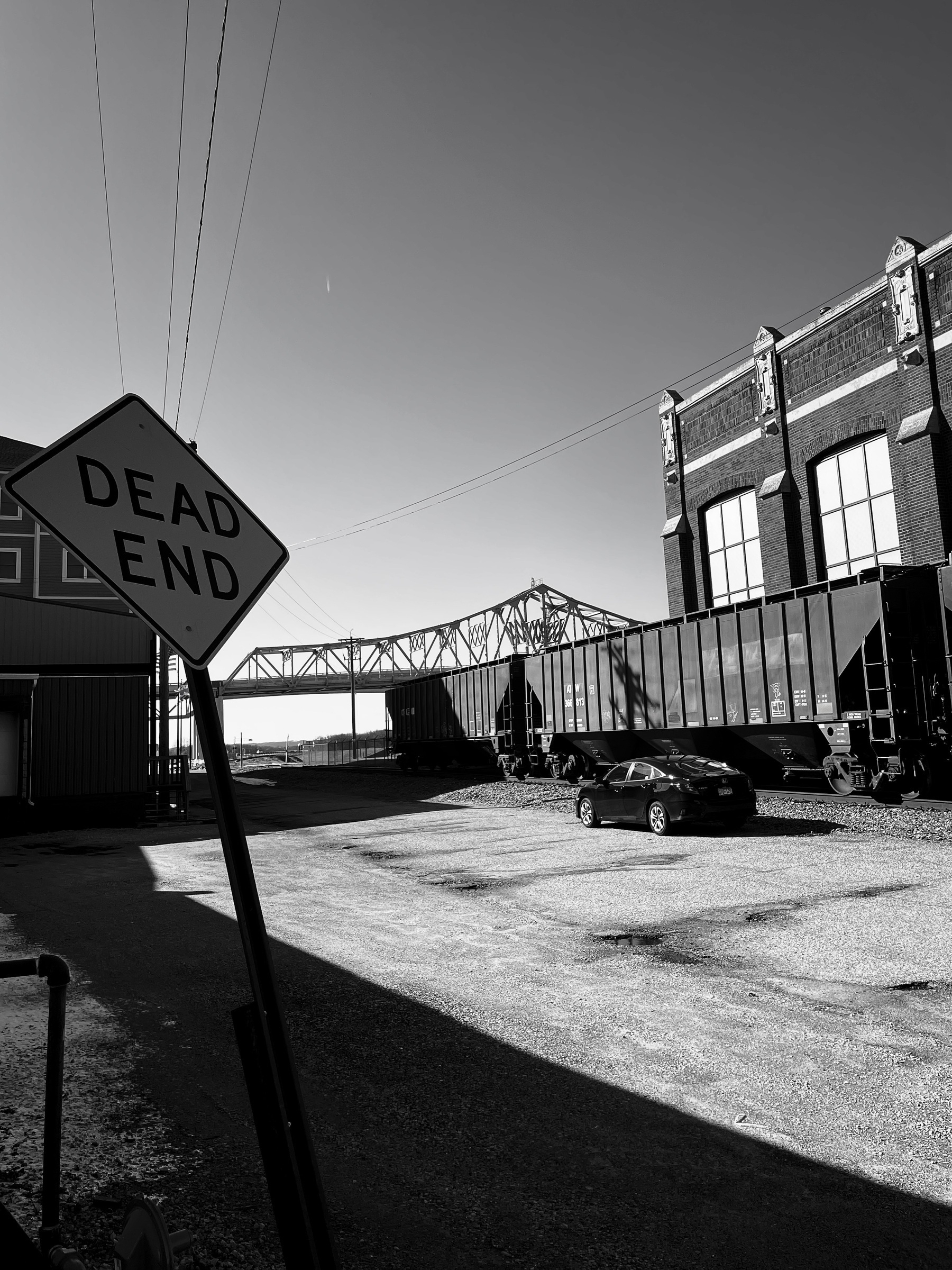
The heralded Blue Heron coffee and breakfast spot had the worst burnt latte we’ve ever had, and the peanut butter-topped chocolate cake was extraordinarily dry. We ate the frosting.
Mugby Coffee (the place that is for sale, or so we surmised from the commercial real estate description), was good, though. Nitro coffee, adequate. Latte, significantly better than Blue Heron. Plenty of space to stretch out.
Aside from a nice walk along the industrial river walk (Levee Park) with the dog to wrap things up, that’s about it.
We also didn’t see a single stained glass window. 🤷♂️
🗺️✈️🔗 Concerning piece by Fionn Pooler on “coffeewashing” practices in the industry. A Short Introduction to Coffeewashing - by Fionn Pooler
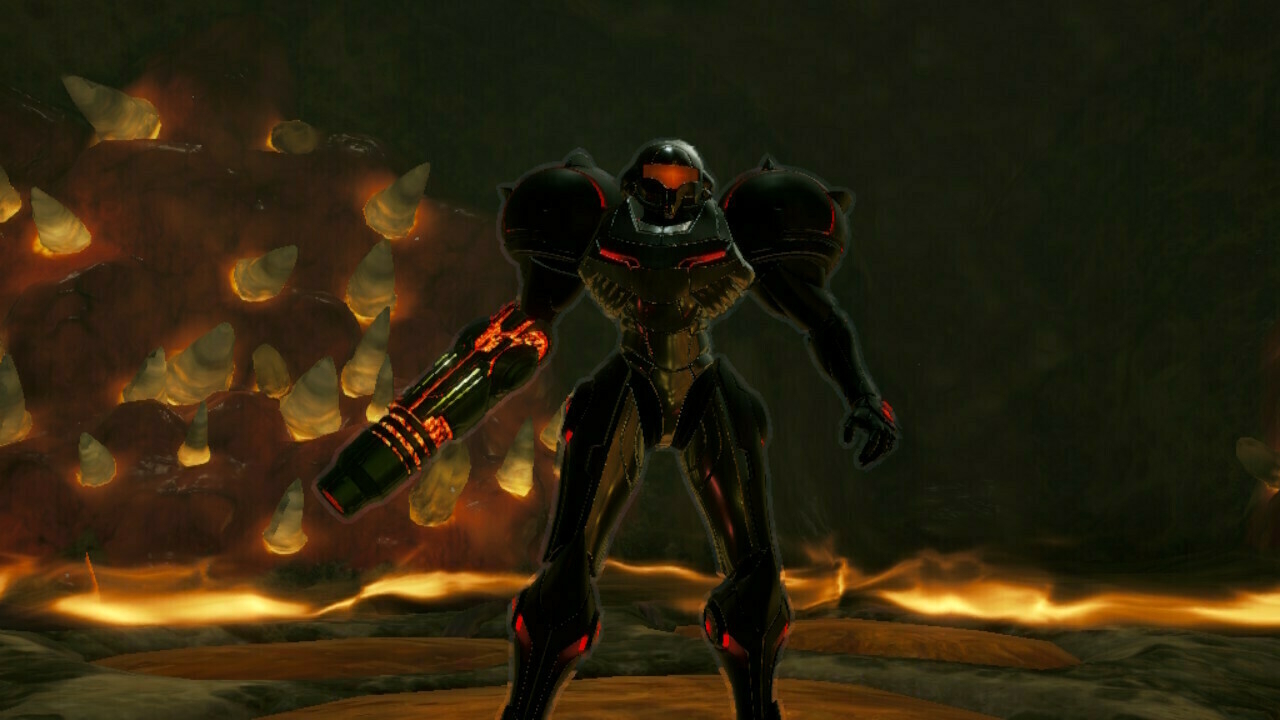
It's been 21 years since I played the original Metroid Prime, released on the purple-clad Gamecube back when I was, what, a junior in high school?
Eons ago.
When Nintendo dropped a remastered version of it for Switch this past month (unexpectedly, I hear?), it wasn't an instant purchase. I had fond memories of the original (its SNES predecessor, Super Metroid, is my definitive favorite game experience), and the Gamecube version built an exceptional three-dimensional vision for its universe that at once respected the source material and paved a new, albeit different path, for the franchise. I remember it being fairly long (compared to speed running Super Metroid in ~two hours), and recent nostalgia trips haven't been rewarding...
Anyway, the siren song of Metroid couldn't be resisted, and I ended up getting Metroid Prime Remastered a week ago. I played the shit out of it, finishing in less than a couple days. It was as remarkable as it was during its first play through, the updated resolution and graphics seamlessly blended in -- like this was how it was meant to be seen on far less adequate hardware -- and the gameplay mechanics haven't missed a beat. Partially why this game works so well is probably the depth of music, sound design, and gameplay weave so well into the very detailed environments, that it feels forever like a perfect Nintendo package.
Of note, the environments (which I don't think were updated significantly beyond their resolution and textures) continue to look like something built in a modern game. I always remembered how different the experience felt back in 2002 -- there were massive vines cracked through walls and strewn about on the ground, pollen and moisture in the air (hitting and steaming up your helmet visor), organic and insectoid creatures moving about between environs, broken debris and spherical/non-blocky objects and walls everywhere that created a much tighter, believable vision for the world -- these all may sound obvious in 2023, but they were so far ahead of its time (especially on console hardware), that it's hard to explain how natural the game still looks and feels 21 years later.
In short: the game is incredible and stands the test of time.
A “short” review of the best pizza place in the Twin Cities
Parked on a worthy block at the corner of Nicollet and E 38th sits an Argentinian pizzeria called Boludo. It’s flanked by Five Watt (if you need coffee) and Fine Meats (if you need meat). But if you want pizza, Boludo is the place.
I don’t live in Minneapolis, but I do live in St. Paul. The problem with living across the river from Minneapolis is delivery services – sometimes they just don’t deliver over here, and sometimes they do. Regardless, in the hopes of trying to wean myself off a reliance of DoorDash to mitigate restaurants needing to pay their ecosystem fees, I decided to pick this Boludo order up myself. Who better to trust.

When I arrive at Boludo (from which I’ve ordered delivery before, but never stepped foot in), I see that the interior of the place is small and utilitarian. A row of hightop chairs against a window table shelf, a few small tables, an open-air fridge with beverages in the corner, and an ordering counter. They also keep pre-made empanadas in a glass display, which is cool. Very bakery-like.
Anyway, this is a review of the food, not the location. It takes less than a minute to announce myself and take my pick up order.
Back in St. Paul, I heat up the oven. I know, it’s probably not purist of me to do this, but I like my pizza warm when I’m getting it fresh. I use a carbon steel pan to heat up a few slices for a couple of minutes, while also dropping some cheese to my dog’s bowl, because she should be able to enjoy this as much as me. Right.

First, I eat the empanada I ordered as a companion to the main feast. I chose what they call the Carne. It’s a buttery soft (but not that buttery, I don’t even know if they use butter in the dough) encasing of beef picadillo, ají molido, and olives. Yes, this sounds like my kind of order. It also comes with a ramekin of chimichurri, so yes, this will be good. And it is. The mix is a perfectly umami, meat-wet amalgamation, and when dipped in chimichurri, the zing of olive oil, cilantro, and pepper elevate it even further. Let’s be honest, anything with chimichurri is going to be good. Anything. Especially an empanada. But the empanada can stand on its own, too.
Okay, moving on to the pizza. I got the Pepperoni Pizza because I’m not going to pass up the opportunity to order my favorite pizza. My favorite, simple ingredient pizza. I mean, look at those pepperonis. If you see them cupping grease like that, you’ve made the right choice.
Now, I’ve had this pizza before. It’s good every time. I think it actually might get better every time.

But first… just look at that pizza. It’s got a hell of a shape. Kind of like a horizontally-stretched quadrilateral. I don’t know why it’s like this. But it’s no matter, because it’s sliced in a way that makes sense and provides tangible pieces to eat (you probably get four good-sized slices out of this). For context, it’s a perfect size for two people who also might be eating an empanada or salad with it. Or for one very hungry person. After I gave it a little heat-up, I dug in and enjoyed every, single, bite. The sauce is amazing – a bright, light San Marzano tomato spread that sits right under a thinly shredded smattering of mozzarella. And I don’t mean a thin amount of cheese – there is a generous portion lopped on the base, but you can see the shredded pieces of mozzarella flung around the box and hanging off the sides of the crust. It’s a masterpiece of design. Lastly, atop the throne, are those small, curled pucks of pepperoni. Grease reservoirs in the best way. No, I’m not patting this down with a napkin – I’m eating it all.
The first few bites reaffirm why this pizza is great – sweet, but not acidic; the soft, precious crust looks charred but tastes like clouds; the cheese apparently isn’t a blend, but fools me into thinking there are ten different shades of mozzarellas immaculately tossed together; and, of course, the pepperoni just seals the flavor trap. A trifecta of genius.

Chef Facundo DeFraia, who according to the Boludo website, spent time in Buenos Aires learning the cooking trade in his grandmother’s kitchen. Whatever time he spent there is now yielding unfathomable joy from anyone who consumes his dishes. He also helped his friend open Martina, whose sister shop next door is also a very, very good pizza spot called Rosalia. They’re all top tier, and I’d have difficulty casting a vote for either Rosalia or Boludo as the king of pizza in the Twin Cities (but there are so many other contenders… I just won’t go there).
Recommended if you live here or are in the area.
Yeah, we’ve all been wondering about this. They are terribly annoying. racketmn.com/why-are-b…
A short appreciation post to one of the best (well, the best) local monthly meal-delivery service out there: Paris Dining Club. It’s a lovely three-course meal you get once a month, but instead of dining out, you’re dining in, and you can do in your PJs while easily preparing chef Jamie Malone’s excellent French-inspired cuisine.
Pictured here is this past month’s first course, a hearts of palm salad (including tangerine supremes, shrimp mousseline, fried shallots, and a rambunctiously citrus vinaigrette). It complemented the main dish (lobster with macaroni gratin) really nicely. I think we ended up pairing this all with martinis.
One of the nice bonuses you get with each box is a local collaboration – for this one, it was a really swank pineapple/lemon/lime/salt/serrano/vanilla mix (to be whipped in a shaker with tequila, natch) from Steady Pour Beverage Co.
Anyway, we’re enjoying this. It’s a fun nice dinner out (but in) to look forward to every third week of the month, no reservations required. Light up some candles, set up the table, and unpack / cook it up in usually less than 20 mins while sipping a wine. It’s nice. I recommend.

Amusing to see EDC land on A1 of the WSJ.
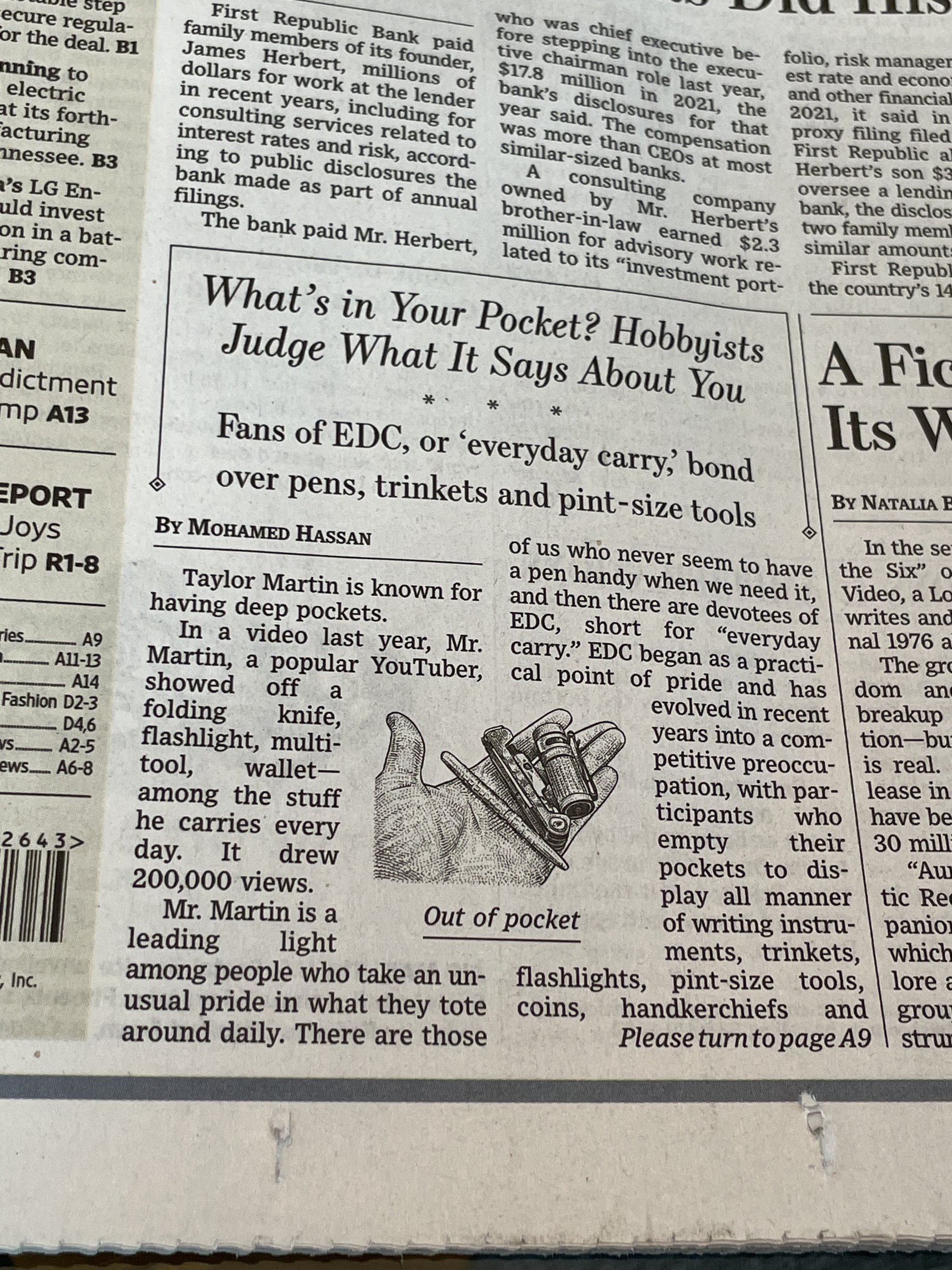
The dangers of industrial capture by the private market could spell a slow progression for nonprofits and government orgs. As noted in FT’s piece, the massive over-indexing of investment in this space compared to public sectors can de-incentivize and disable the ability to use AI for societal, environmental, and infrastructure purposes that would be invested in and explored by the government.
While I am not against the proliferation of private markets’ usage and maturation of the tech, it will undoubtably be in the service of monetization (how else can they achieve returns on the $100+bn investment last year alone?), and models developed may not necessarily be useable for the purposes of advancing non-private agendas, slowing or preventing innovations that are possible here.
Assuming he’s actually going to do this… it’s a very thoughtful (and obvious) measure to take as a CEO:
Mr. Narasimhan said he plans to regularly work alongside baristas in cafes to understand why it sometimes is so aggravating to get a customer a simple cup of coffee. He intends to work four hours in a different Starbucks store each month and expects his senior leaders to do the same.
Heggies, the GOAT.
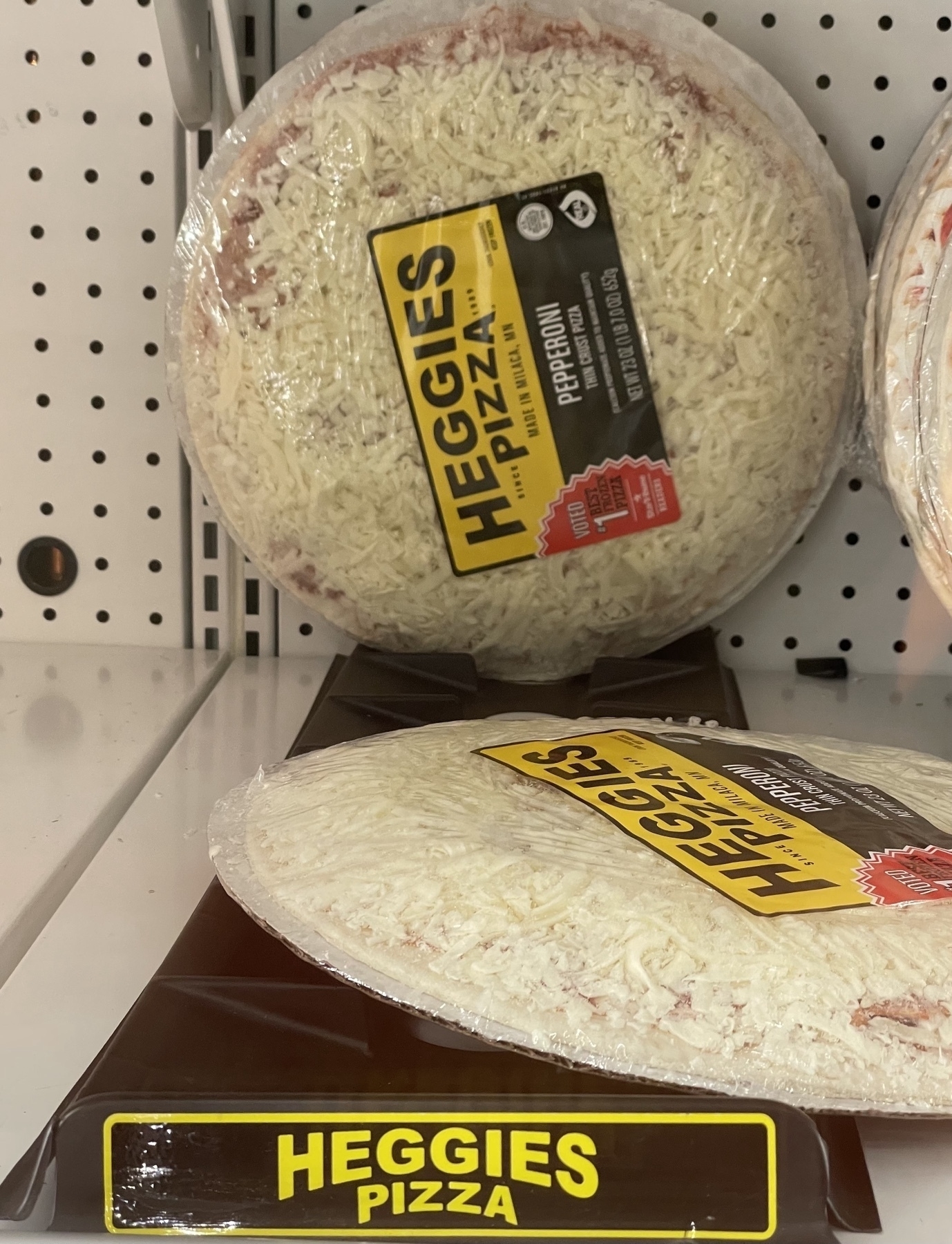
Dave Winer has the right read on the ChatGPT situation.
Another generation of every information app on the net, and that’s more or less the whole net. A top-to-bottom rewrite.
Impressive to see.
“It got denied 100 percent by every county commissioner that was on the board– so that was the end of it,”
Morgan votes down Dollar General’s permit to build - kare11.com
Riveting analysis and perspective on idlewords.com (aka the Pinboard guy) as to why we shouldn’t send humans to Mars, but rather save money, turmoil, and blood, and send robots instead.
Quite satisfied with this post-dinner haul from Trader Joe’s for the hotel tonight. Twist-top bottle for wine is the trick.
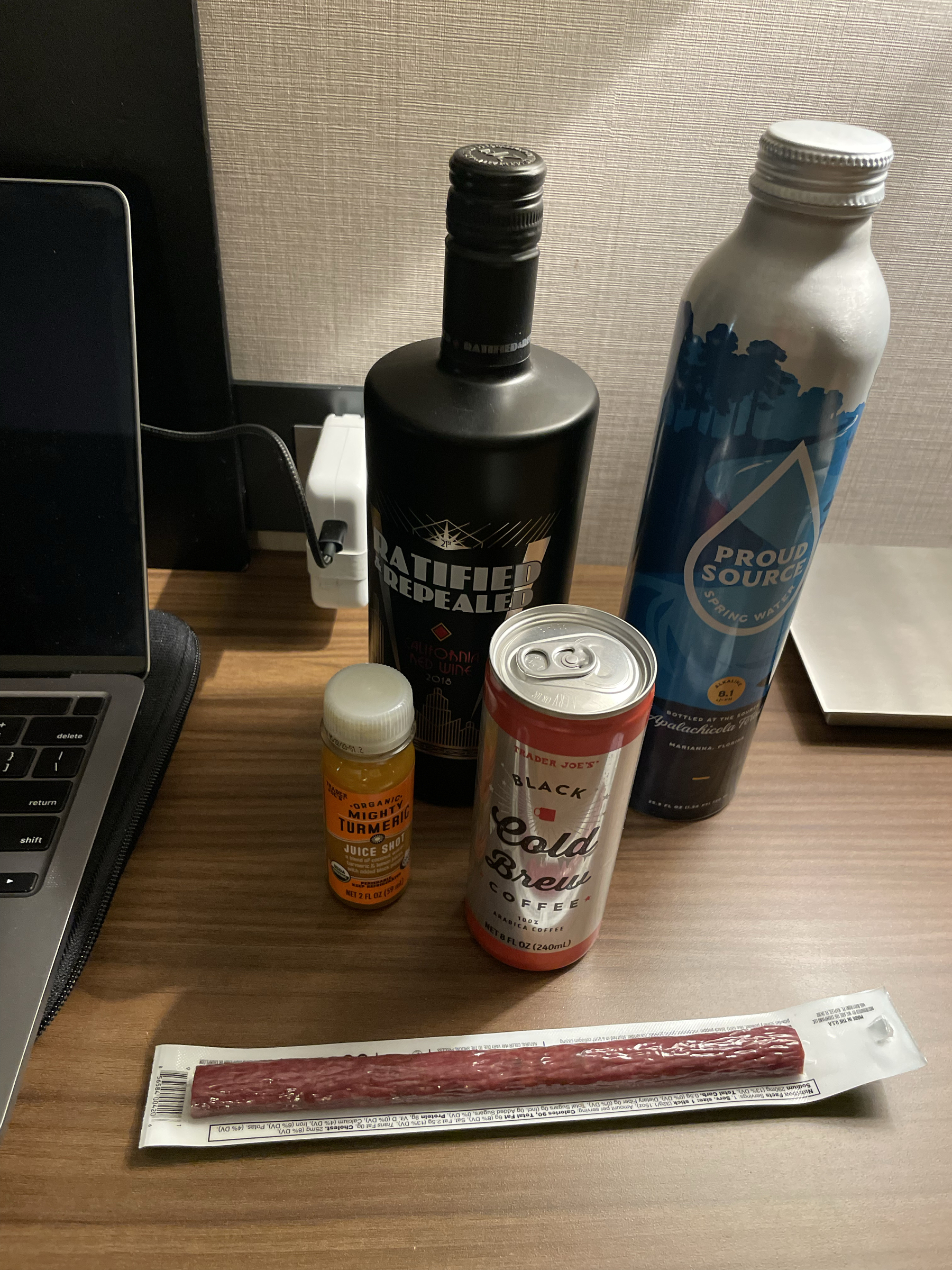
Here I go again with another post on zipper pulls.
Why is it I find these things fascinating? First, it helps that I love bags, their design, and the joy they bring in usage (traveling in any form). While some folks derive additional joy out of tweaking, optimizing, and maintaining their hardware (computers, automobiles, homes, et al), bags don't inherently have a lot of maintenance or tinkering, at least not intrinsically.
So naturally, one of the easiest ways to customize and add incremental user interfaces to a bag is through its zipper pulls. I first got into the habit (itch?) for this back when I had my first truly quality bag (Goruck's GR1). Since then, I've bought several other bags/accessories from great manufacturers like Tom Bihn, Aer, Peak Design, and Evergoods, and tinkered with zipper pulls on every one of them. It's fun, it's a way to putz around, and find some enjoyment out of configuring.
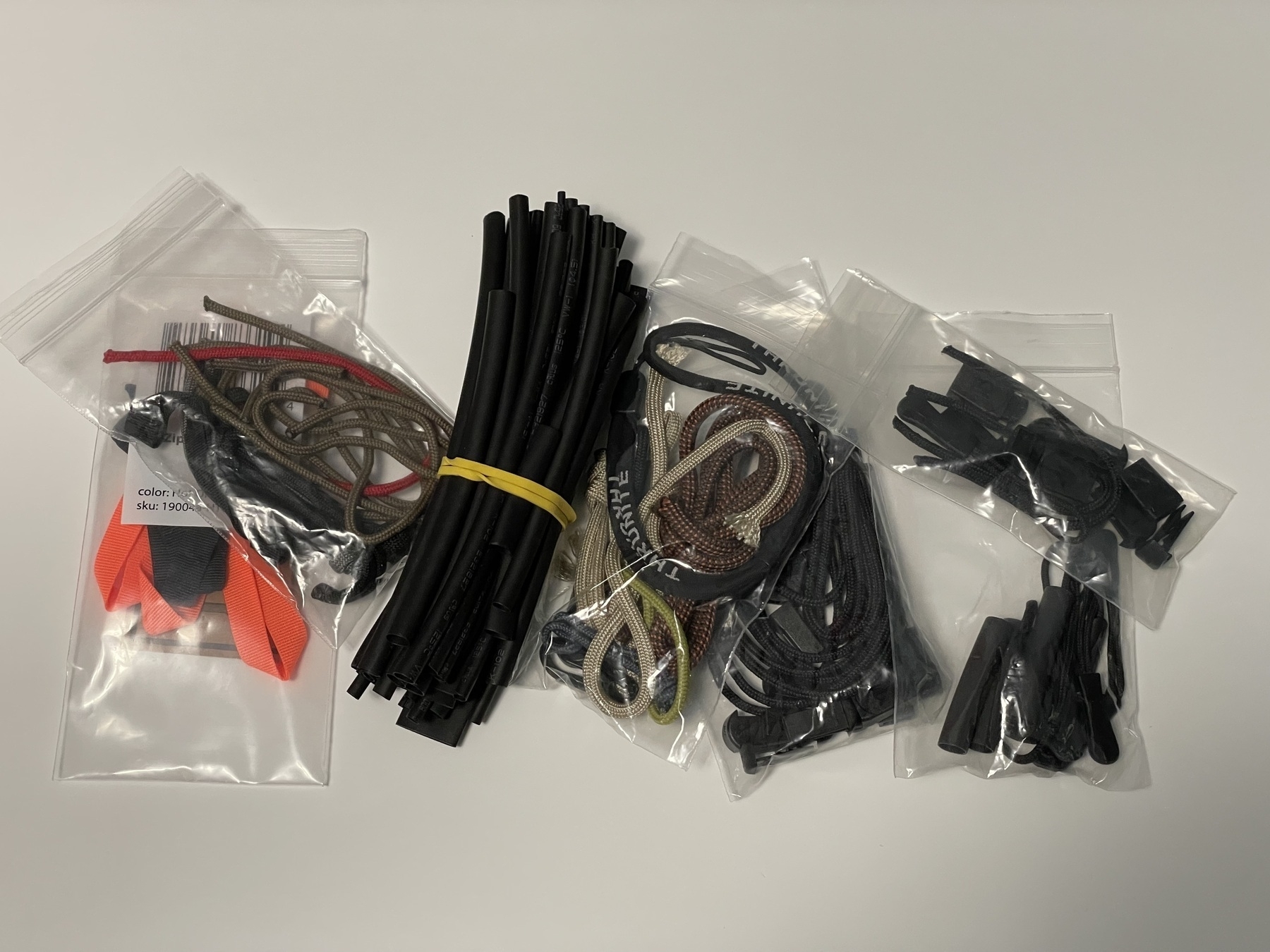
Modifying zipper pulls isn't difficult, either, and the zipper doesn't even need to have a proper slider tab to do it (the typical "pull" for the zipper). Goruck famously removes the tabs and uses heat wax over paracord for a silent zipper pull mechanism that is still one of the best implementations in the industry. If you think about metal zipper pulls on some bags/suitcases, they can be loud and annoyingly jingle every time you move the bag -- Goruck's method, or having a non-metal zipper pull threaded through a zipper tab, can help mitigate the noise or entirely dampen the noise.
Anyway, if you're looking for something incredibly mundane but somehow gratifying to freshen up your bags, this is a good way to go about it!
A little bit of serenity taking a break from the throes of winter back in MN.
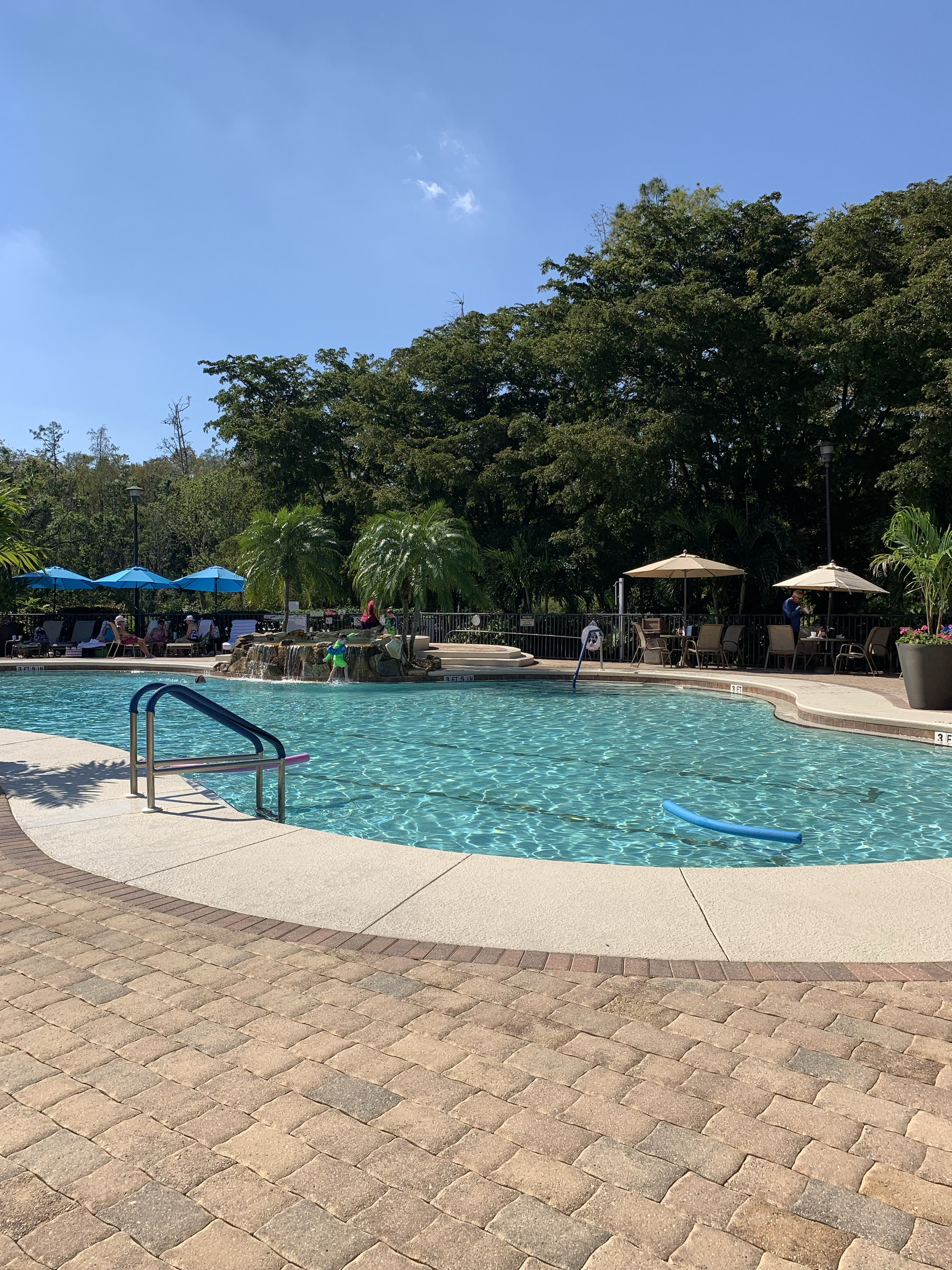
As a hot sauce madman, this incredible report of a stranded sea survivor has me brimming with new found respect for the household ketchup.
You love to see the ambition here… surfing in the dead cold of winter on Duluth’s Lake Superior shore.